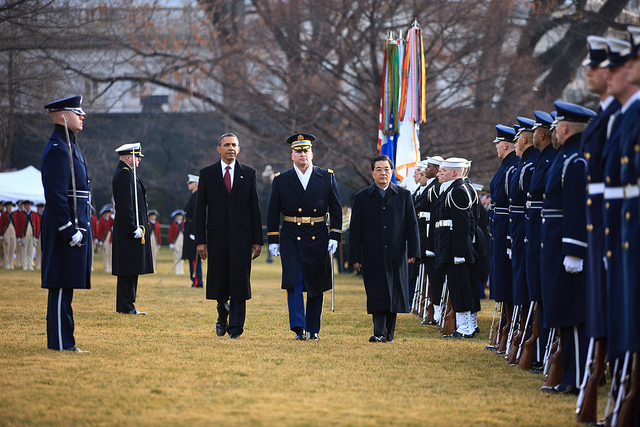
The future relationship between the United States and China will significantly define Asia’s strategic future. For Australia, there’s no more important question than how Washington and Beijing will manage their relationship. So it’s great to see that the government’s new Defence White Paper (DWP) introduces a much more nuanced assessment of the emerging US–China strategic balance and its implications for Australian defence policy.
The 2009 DWP was very strong in pointing to Chinese military assertiveness as a major source of concern for Australian defence policy, but the new document states that the government ‘does not approach China as an adversary’. It also recognises Beijing’s military modernisation as a ‘natural and legitimate outcome of its economic growth’. This reflects the reality that China’s military rise doesn’t automatically mean greater instability in Asia.
Yet, even more important is that the 2013 DWP has a chapter called ‘The United States and China’. The message is clear and compelling: Australia recognises that both Washington and Beijing face the same challenges and carry primary responsibility to manage their relationship in the best interest of the region. Indeed, the paper argues that ‘[w]e expect that both the United States and China will work hard to maximise cooperative aspects and minimise the competitive elements in the relationship’. Putting them together in one chapter also avoids unhelpful dichotomies about Australia having to ‘choose’ between the US and China. As the DWP rightly points out, America’s China policy has long characterised by cooperation and competition, and there is nothing that suggests that an abrupt shift for the worse is inevitable. The document therefore concludes that Australia does not have to choose ‘between its longstanding Alliance with the United States and its expanding relationship with China; nor do the United States and China believe we must make such as choice’. As Mark Thomson has convincingly argued, Australia’s manoeuvring between the United States and China isn’t a simple ‘zero-sum’ game.
Critics might argue the DWP is kowtowing to China. That’s not true. The paper points out that China’s growing defence capabilities are subject of concern in the region and that ways of managing uncertainties and miscalculations have to be found. It also makes absolutely clear that the US alliance remains the cornerstone of our defence policy and that we’ll continue to support America’s ‘rebalance’ towards Asia.
A final piece of nuance is that the DWP makes clear, without mentioning China, that the risk of a major power attack on Australia is not only extremely unlikely but that we should never expect to defend ourselves alone against such a scenario. Should World War III break out, the US and other regional countries would be on our side; if not, we’re doomed anyway. In other words, we shouldn’t use unrealistic worst case assumptions as the basis for defence planning; we simply don’t need the capacity to ‘rip an arm off’ a major power.
Benjamin Schreer is a senior analyst at ASPI. Image courtesy of Flickr user The White House.
Correction: An earlier version of this article incorrectly designated the Growler aircraft EF-18G.

